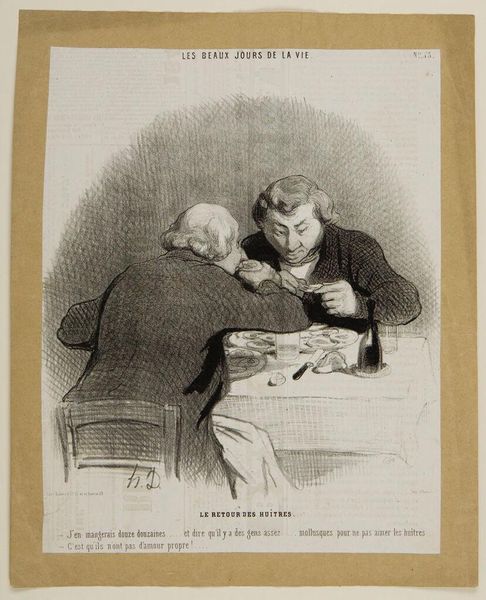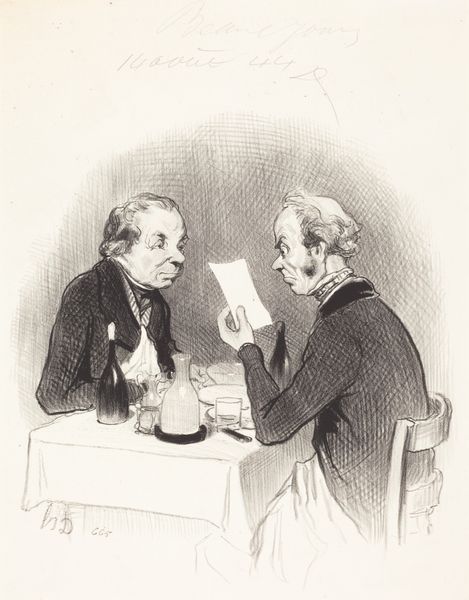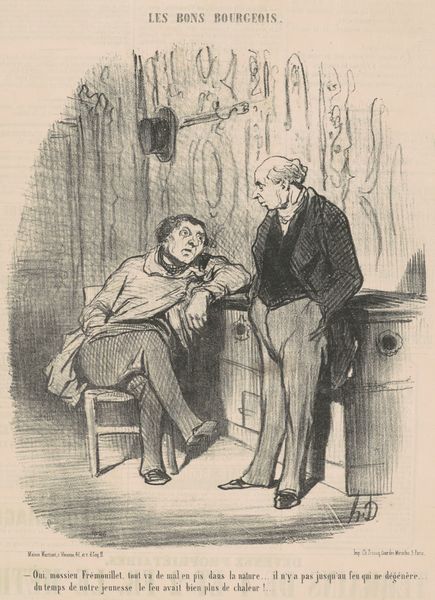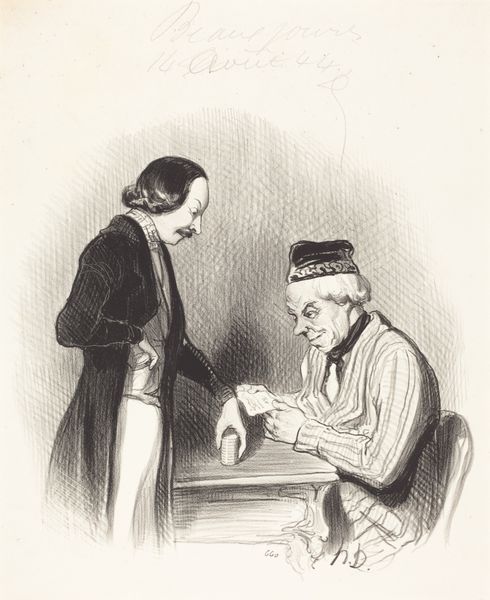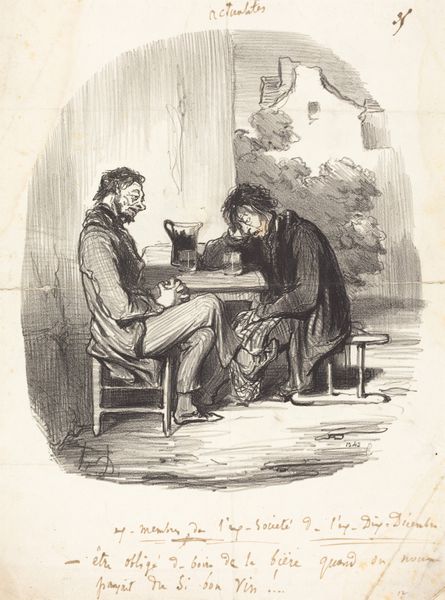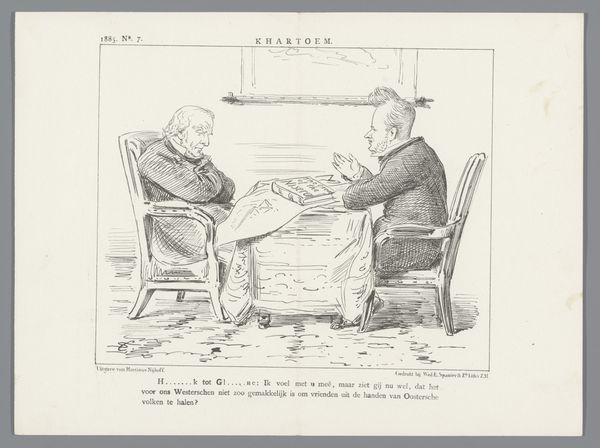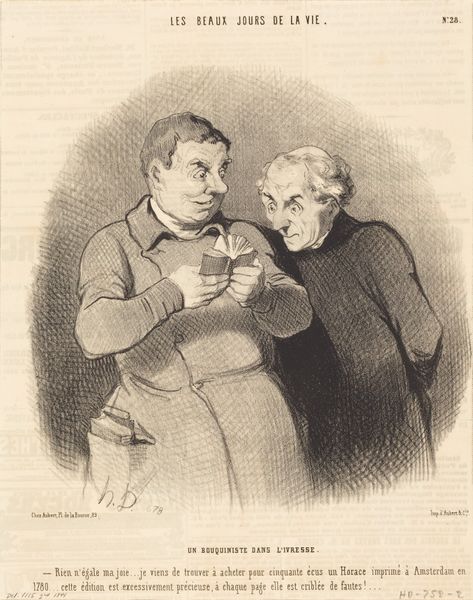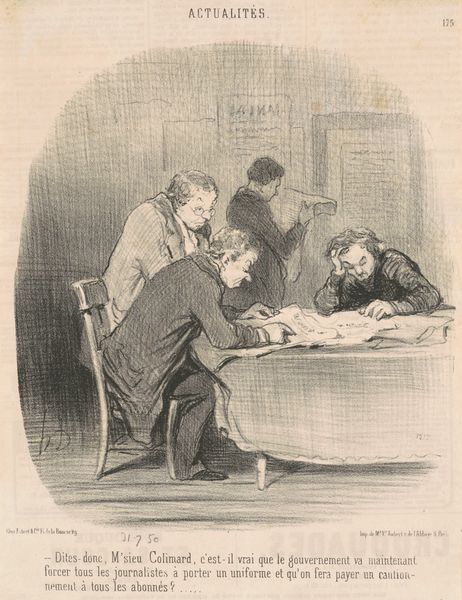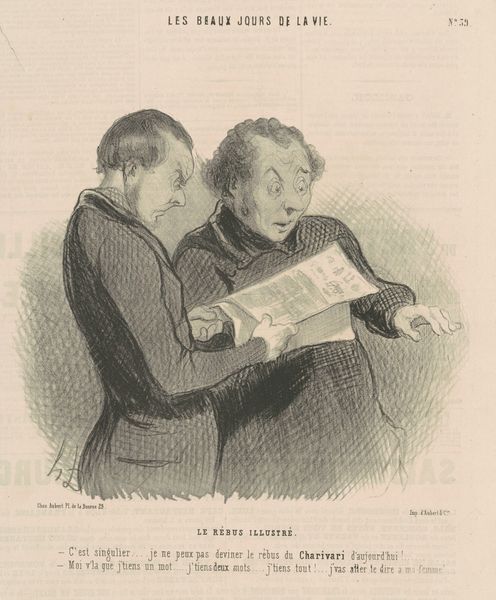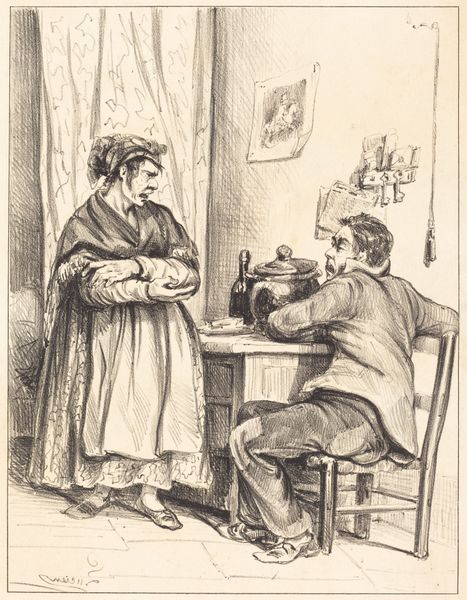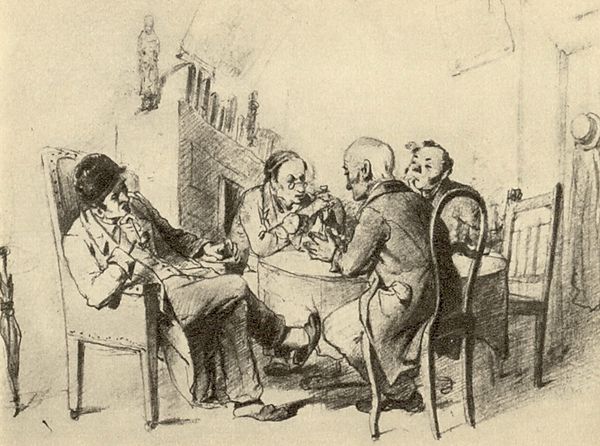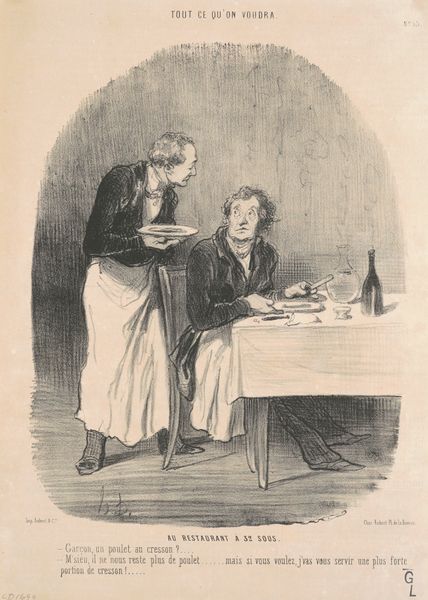
drawing, lithograph, print, pen
#
drawing
#
lithograph
# print
#
caricature
#
pencil sketch
#
romanticism
#
pen
#
genre-painting
Copyright: National Gallery of Art: CC0 1.0
Curator: Look closely at this lithograph entitled "Le retour des huitres", or "The Return of the Oysters", created by Honoré Daumier around the mid-19th century. The artwork employs pen, pencil, and lithographic techniques. Editor: It strikes me immediately as darkly comic. The stark black and white amplifies the almost grotesque absorption of these figures as they consume oysters. There's a hint of excess and maybe a touch of self-indulgence in their postures. Curator: Daumier, renowned for his social and political caricatures, often used his art to critique the bourgeoisie. Prints like these were hugely popular in newspapers of the time, offering social commentary to a wide audience. In a politically turbulent 19th-century France, artists served as vital social commentators, which in many ways has impacted the socio-political role that art has today. Editor: Oysters, historically associated with luxury and sensuality, can be viewed here as symbols of bourgeois excess, maybe even a vulgar pursuit. Look at how the characters appear utterly consumed, shutting out everything but the gratification of eating. It evokes that almost predatory fascination some symbols take on. It feels intentionally exaggerated and hyperbolic. Curator: Precisely. The text underneath reinforces this point. It satirizes people who say, roughly translated, "I could eat a dozen dozen oysters" as those who have "no self-respect". The artist’s visual storytelling uses satire to underscore the pitfalls of social complacency and greed, aligning well with his career-long advocacy for the impoverished. Editor: The composition, with its focus on the intense focus and disregard on these men, feels loaded. The image is a reminder of what could be, an internal truth or the "deeper symbolic meanings." The oysters almost fade in meaning in respect of the deeper social criticisms levied on the Bourgeoisies. Curator: Analyzing Daumier’s piece under the lens of historical reception, one gains a more robust understanding of societal dynamics. I always find it amazing to consider that even artworks such as Daumier’s that seems fixed to a moment can find newfound resonance and applicability with time. Editor: Absolutely, and by tracing those cultural threads within visual cues, we find our dialogue enriched, allowing us to explore the intricate relationships among images and time and history.
Comments
No comments
Be the first to comment and join the conversation on the ultimate creative platform.
